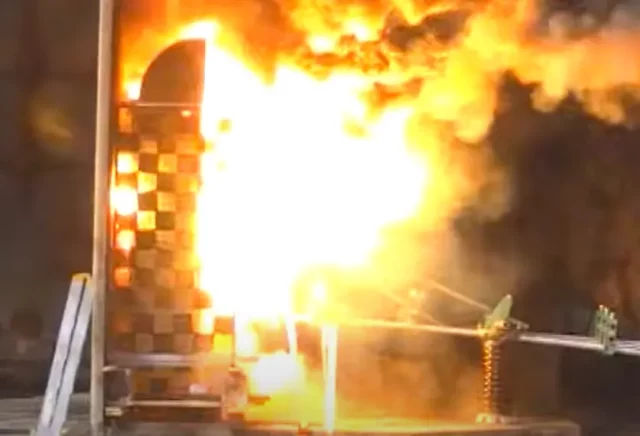1. Introduction
Arc flash hazards pose serious risks to personnel, equipment, and facility operations in both industrial and utility-scale electrical systems. Mitigation of these hazards is governed by international standards which provide frameworks for calculation, design, protection, and personnel safety. Two major frameworks dominate global practice: the International Electrotechnical Commission (IEC) and the Institute of Electrical and Electronics Engineers (IEEE) under the American National Standards Institute (ANSI).
This article compares the approaches of IEC and IEEE/ANSI standards regarding arc flash hazard mitigation. It evaluates their stringency, outlines their methodologies, and provides a practical guide to compliance with international best practices.
2. Key Abbreviations
| Abbreviation | Description |
|---|---|
| IEC | International Electrotechnical Commission |
| IEEE | Institute of Electrical and Electronics Engineers |
| ANSI | American National Standards Institute |
| NFPA | National Fire Protection Association |
| OSHA | Occupational Safety and Health Administration |
| PPE | Personal Protective Equipment |
| ATPV | Arc Thermal Performance Value |
| EBT | Energy Breakopen Threshold |
| ZSI | Zone Selective Interlocking |
| LV | Low Voltage |
| MV | Medium Voltage |
| HV | High Voltage |
3. Governing Standards
3.1 IEC Standards
- IEC 61482-1-1: Test methods for protective clothing (Open Arc)
- IEC 61482-1-2: Box test method for arc protective clothing
- IEC 61482-2: Requirements for protective clothing against arc flash
- IEC 61641: Internal arc testing for LV switchgear
- IEC 62271-200: Internal arc classification for MV switchgear
- IEC 60255: Protection relays – electrical safety
- IEC 60909: Short-circuit current calculations
- IEC 60079: Equipment for explosive atmospheres (relevant for hazard zoning)
3.2 IEEE/ANSI Standards
- IEEE 1584-2018: Guide for Arc Flash Hazard Calculations
- NFPA 70E: Electrical Safety in the Workplace
- NFPA 70 (NEC): National Electrical Code
- ANSI C2 (NESC): National Electrical Safety Code
- OSHA 1910 Subpart S: U.S. legal requirements for electrical safety
- ASTM F1506: PPE performance requirements for arc protection
- ASTM F1959: Testing method for arc ratings of materials
4. Methodological Comparison
| Criteria | IEC | IEEE/ANSI |
|---|---|---|
| Risk Approach | Prioritizes prevention through design, barriers, and arc-rated gear | Focuses on calculation and quantification of incident energy exposure |
| Assessment Method | Type-testing of equipment and PPE using box/open arc methods | Empirical formulae considering system voltage, gap, enclosure size, and fault current |
| System Fault Basis | Based on symmetrical/asymmetrical fault calculations (IEC 60909) | Based on ANSI and IEEE C37 standards |
| Design Practice | Equipment is type-tested for arc resistance (e.g., IEC 61641, 62271-200) | Equipment rated per utility practice, but not type-tested for internal arcs |
| Technique | IEC Approach | IEEE/ANSI Approach |
|---|---|---|
| Arc-rated PPE | Class 1/2 per IEC 61482-2 | PPE Categories 1–4 per NFPA 70E |
| Arc-resistant Equipment | Mandatory for critical systems per IEC 61641, IEC 62271-200 | Recommended for MV/HV, not formally required |
| Arc Flash Relays | Used in conjunction with IEC 60255 relays | Used extensively to reduce clearing time |
| Remote Operation | Strongly recommended | Common, especially for switchgear or breakers |
| Maintenance Mode | Not formally defined | Defined in NFPA 70E for reduced energy exposure |
| Labeling | Not universally mandated | Required by NFPA 70E and OSHA |
| ZSI | Used to reduce clearing time | Widely applied in breaker coordination |
| Fault Study | IEC 60909 for fault level, arc hazard per IEC TR | IEEE 1584 for incident energy and arc boundaries |
| Parameter | IEC | IEEE/ANSI |
|---|---|---|
| Standard | IEC 61482-2 | ASTM F1506 (with NFPA 70E enforcement) |
| Test Method | Open Arc & Box Test (IEC 61482-1-1/1-2) | ASTM F1959 (ATPV/EBT determination) |
| Labeling | Class 1 (4 kA) or Class 2 (7 kA) | PPE Category 1–4 based on incident energy |
| Acceptance Region | Widely used in EU, Asia, Middle East | Standard in U.S., Canada, international oil & gas |
7.1 To Comply with IEEE/ANSI:
- Perform detailed arc flash hazard analysis per IEEE 1584-2018
- Label all electrical panels with arc flash boundary and PPE category per NFPA 70E
- Use maintenance mode settings on protection devices
- Provide training, risk assessment, and energized work permits in compliance with OSHA 1910
- Ensure PPE complies with ASTM F1506
7.2 To Comply with IEC:
- Specify switchgear and panels with internal arc classification (e.g., IEC 61641 for LV, IEC 62271-200 for MV)
- Select PPE rated under IEC 61482-2
- Limit access to live working zones and implement physical barriers
- Follow IEC 60909 for short-circuit studies that underpin arc hazard estimation
- Use remote racking, interlocks, and system segregation to avoid exposure
8. Comparative Stringency
| Category | More Stringent |
|---|---|
| Arc Flash Hazard Calculation | ✅ IEEE/ANSI (IEEE 1584) |
| Equipment Arc Containment | ✅ IEC (Internal Arc Testing) |
| Workplace Safety & PPE Programs | ✅ IEEE/ANSI (NFPA 70E, OSHA) |
| Enforceability by Law | Depends on jurisdiction: U.S. (IEEE/ANSI), EU & others (IEC) |
9. Hybrid Best Practice for Global Projects
Many international projects adopt a hybrid compliance strategy to meet both sets of standards:
- Use IEEE 1584 for arc flash hazard assessment and labeling
- Specify IEC 61641 / IEC 62271-200 compliant arc-resistant switchgear
- Adopt NFPA 70E safety policies, risk assessments, and PPE programs
- Select clothing compliant with IEC 61482-2 and/or ASTM F1506
- Conduct fault studies using both IEC 60909 and ANSI/IEEE models where applicable
10. Conclusion
Both IEC and IEEE/ANSI offer robust approaches to arc flash hazard mitigation. While IEEE/ANSI is more stringent in risk assessment, labeling, and operational safety, IEC excels in equipment design and fault containment. International practitioners and engineers must understand the strengths of both and integrate them based on project location, statutory requirements, and operational priorities.
